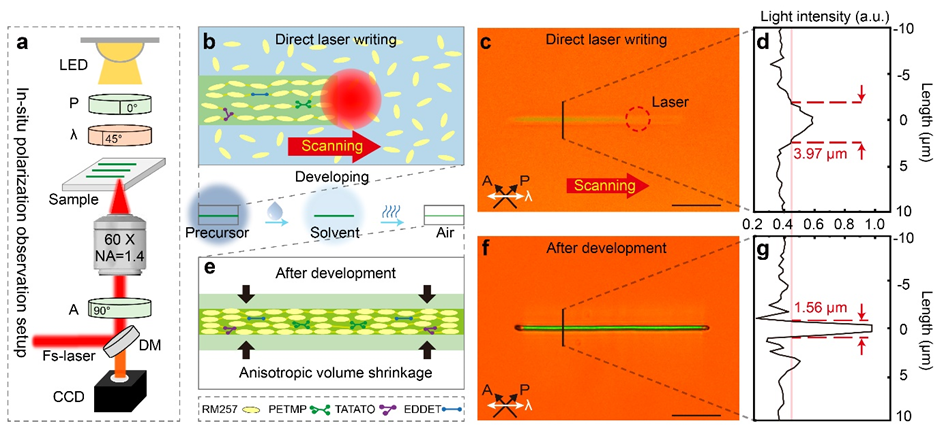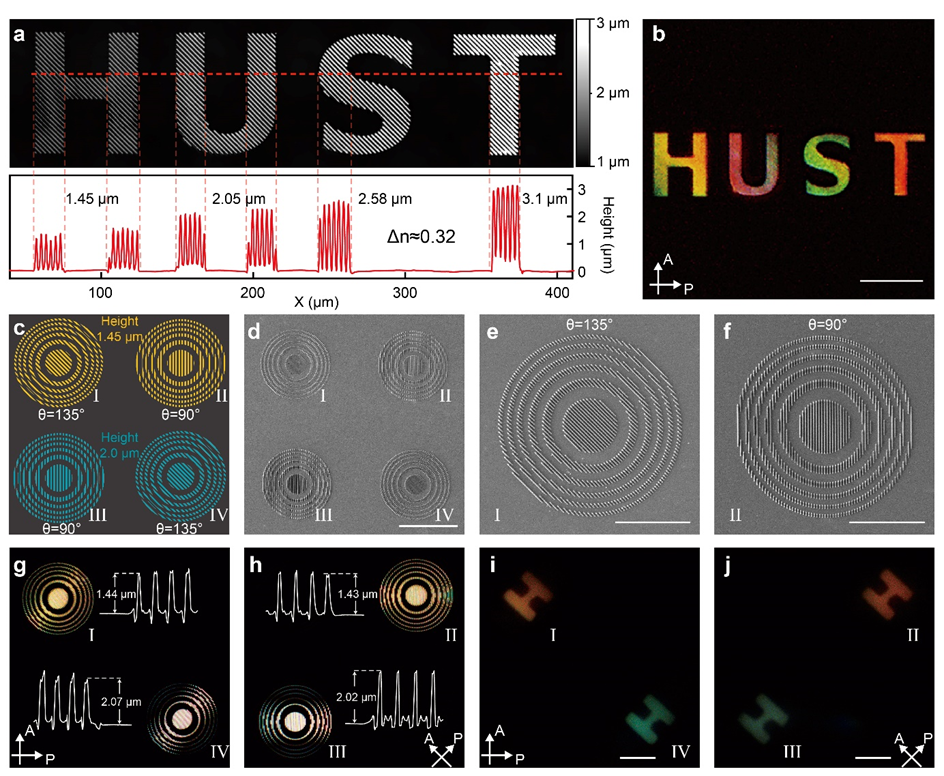Prof. Wei Xiong's team from the Wuhan National Laboratory for Optoelectronics at Huazhong University of Science and Technology recently introduced a novel method for three-dimensional (3D) assembly of liquid crystal (LC) molecules. By programming the scanning pathway of femtosecond laser focus, the team achieved high precision, high degree of freedom, and 3D directional assembly of LC molecules. This innovation not only enables the high-precision 3D assembly of LC-based optoelectronic devices, but also presents novel avenues for the 3D directional assembly of other anisotropic molecules. Their findings were published in Advanced Materials, titled 3D Directional Assembly of Liquid Crystal Molecules.
Molecular self-assembly, a technique where disordered molecules spontaneously form ordered structures through intermolecular interactions, stands as one of the most promising "bottom-up" nanotechnologies. This approach harnesses the optical, electrical, magnetic, thermal, and mechanical properties of molecular anisotropy, catering to diverse application needs in information, life sciences, electronics, and materials. However, the inherent weakness of intermolecular interactions often fails to yield the required anisotropy for practical applications. Consequently, external physical fields like electromagnetic fields are introduced to achieve directional molecular assembly.
Currently, molecular directional assembly predominantly manifests in a uniaxial ordered alignment. Even in 3D assembly, molecules are aligned by lattice or stacking configurations, impeding the achievement of high precision, programmability, and high degrees of freedom essential for advanced 3D molecular assembly.
To address this challenge, the research team selected a typical anisotropic LC molecule and employed femtosecond laser direct writing technology. They programmed the scanning pathway of the laser focus to achieve a high degree of freedom in 3D directional assembly of LC molecules, with the assembly direction aligned with the laser scanning direction. Notably, this method eliminates the need for pre-orientation processing of LC molecules. Significantly, for the first time in the realm of 3D LC assembly, the light field is utilized for both molecular orientation and polymerization processes, enabling one-step high-precision molecular assembly, as depicted in Figure 1.

Figure 1. Schematic diagram of the 3D directional assembly of LC molecules.
By integrating a real-time polarization observation module into the processing system and employing theoretical calculations, the research team investigated the physical mechanism underlying the femtosecond laser-oriented assembly of LC molecules. Results reveal that during the femtosecond laser scanning process, the predominant shear effect induces the formation of oriented seed layers of LC molecules along the direction of laser scanning. Subsequently, during the development process, the anisotropic volume contraction leads to the alignment of polymer main chains along the laser scanning pathway, thereby augmenting the orientation of the LC molecules, as illustrated in Figure 2.

Figure 2. Real-time observation setup and principles of LC molecular assembly.
This study fully exploits the programmable advantages of femtosecond laser processing to realize structures with varying assembly directions and polarization interference colors. Consequently, the research team successfully fabricated a Fresnel zone plate array endowed with polarization selection and color imaging functions, as depicted in Figure 3.

Figure 3. Polarization interference color and Fresnel zone plate array.
The research team has successfully achieved submicron precision (129.6 nm) and a high degree of freedom in the 3D assembly of LC molecules by employing the femtosecond laser directional assembly of molecules. Furthermore, this method has demonstrated significant potential in the anisotropic assembly of other organic polymer materials.
Zexu Zhang, doctoral student from the Wuhan National Laboratory for Optoelectronics, is the first author of the paper, with Professor Wei Xiong as the corresponding author. Huazhong University of Science and Technology and Hubei Optics Valley Laboratory are the research institutions involved. This research work has received support from the National Key R&D Program, the National Natural Science Foundation of China, the Optics Valley Laboratory Innovation Research Project, the Central University Research and Innovation Fund, and the Wuhan Dawn Knowledge Innovation Program.